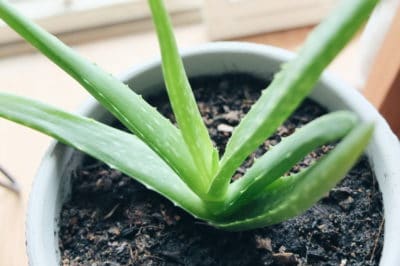Why Grow Aloe Indoors?
Even if you live where aloes grow outdoors (USDA Zones 9 and above), you may still want a plant on your windowsill for these reasons:
- Insurance – although rare in outdoor growing areas, a hard freeze may kill aloes grown outdoors.
- First aid – aloes can help soothe a minor burn or itchy skin. Cut a leaf, squeeze out the gel and apply.
- Unlike some houseplants, aloes require minimal care.
The Right Pot
Aloe vera will grow happily in most containers. The primary requirement is good drainage, as these desert plants can’t tolerate soggy soil. An aloe shouldn’t have too much room in the pot, as it increases the risk of chronically wet soil. Use a pot that will provide no more than half an inch of soil around the plant and no more than an inch under the plant’s roots.
The Right Soil
Aloes do need nutrients, but they are not heavy feeders. A commercial cactus mix works well for indoor aloes. If you mix your own, make sure it drains well. A combination of two parts organic material such as compost, one part perlite or vermiculite and one part coarse sand or pumice should be fine. With this mix, you won’t need to fertilize in most cases.
The Right Light
In the wild, aloe vera grows in the desert. This is one of the houseplants that can handle full sun in a window that faces due south, east or west. Most aloes won’t do as well with a northern exposure. It may tolerate dappled afternoon shade in a south-facing window. If necessary, supplement natural light with grow lights.
The Right Water
Over-watering will kill aloe vera plants faster than anything else you can do. Use room temperature water and water about once a week – less often in winter. Check soil to make sure it’s draining properly. If you only have access to tap water, allow it to sit on the counter overnight in a bowl or pot to dissipate the chlorine.
When There’s a Problem
An aloe doesn’t like its growing conditions, it may shrivel and brown at the edges. Although eventually the plant will die, most aloes can recover at this stage if the problem is fixed. Over-watering is the most likely culprit – hold water for a few weeks. Check for amount and duration of light and move if necessary. Repot once a year.
